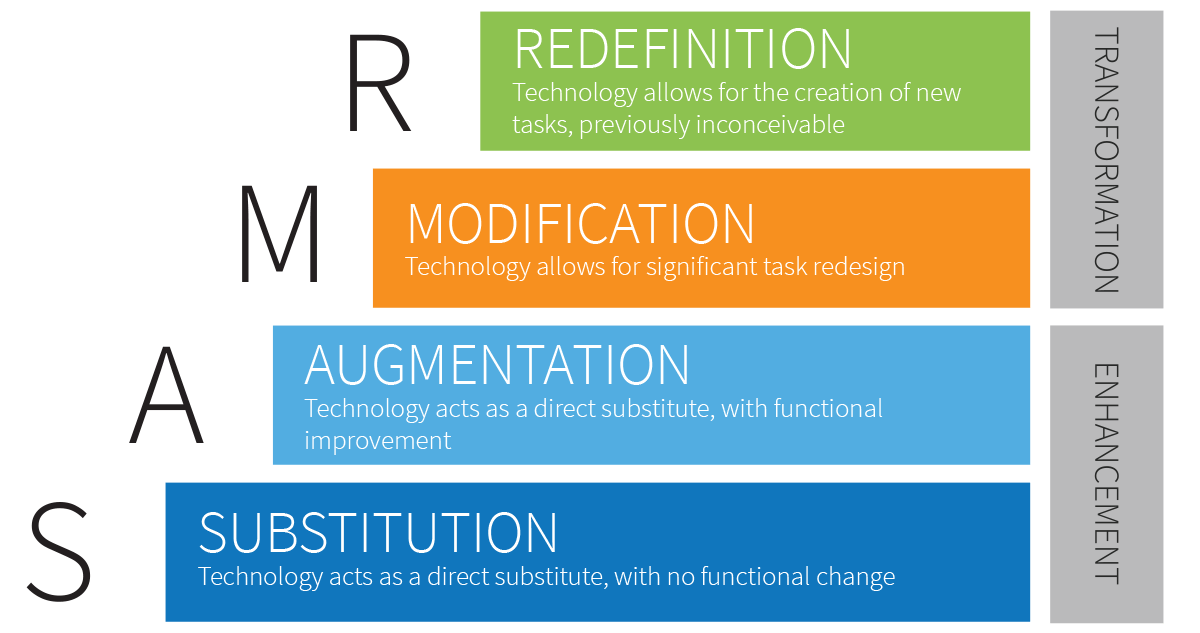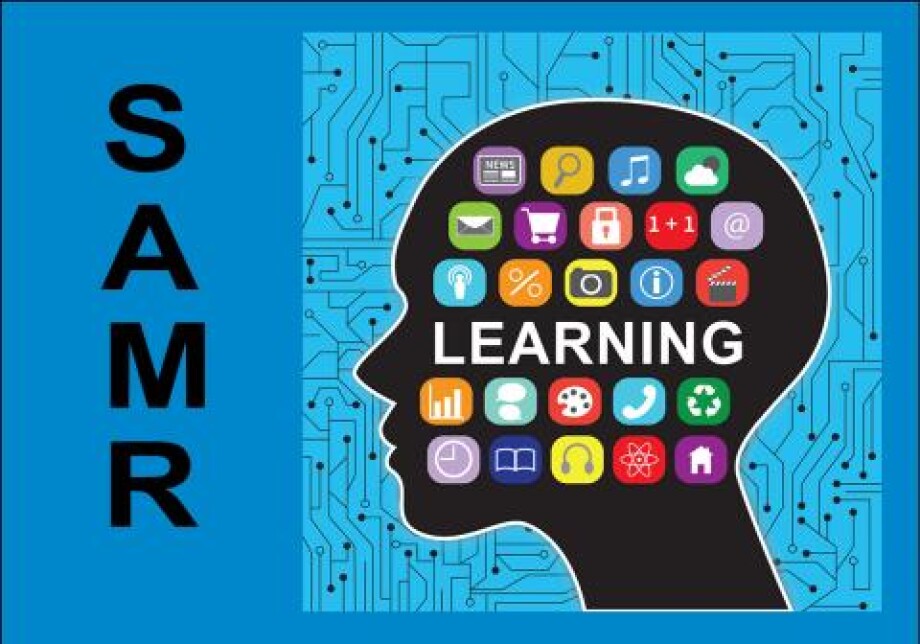Computer technology allows us to create and complete tasks which initially were impossible to do online. In other words, thanks to the technology, new tasks and activities can emerge. With all the ongoing online teaching a lot of new methods and activity design models come to life, which, though existed, but weren’t given the due attention they deserve on the global scale. One of those models is called the SAMR model developed by Dr. Ruben Puentedura.
What is the SAMR model?
The SAMR Model is a framework that categorizes four different degrees of classroom technology integration. The letters SAMR stand for; Substitution, Augmentation, Modification, Redefinition.

As you can see from the picture above, Substitution and Augmentation are considered to be an Enhancement approach to activity design. In other words, it’s a new way of presenting an activity. Modification and Redefinition fall under Transformation, which means that they are presenting a new way of doing an activity, redefining the learning process and teaching in a different way.
Let’s look at these four models of activity design in more details.
Substitution
This is when we shift the face to face activity to an online classroom. Nothing changes in the activity design other than the means.
Let’s say, in face to face classes the student needs to fill in the gaps of an exercise on a handout but during an online session they will need to download the handout first, complete the task, finish it and submit to the teacher.
Another example can be using PPT slides to present the target language to the students as replacement to the board in the classroom.
So, basically, there was no functional change in how the activity was done. The use of technology is limited to a means of completing a task.
Augmentation
This model integrates computer technology to complete a task in a more efficient way. There are some adjustments in the use of technology which are aimed at making the activity easier to perform.
Let’s take the same example of completing an exercise on a handout. During a face to face session teacher would check the exercise open class or distribute the key. Applying the model of augmentation, an online tool is chosen is complete an exercise which students can check themselves as the key is embedded. Those can be created on Quizlet, LearninApps, Wordwall, ect. You can find a similar activity here.
The functional benefit here is that less time is spent on receiving, completing and submitting the task and there is immediate feedback on the results.
Modification
Here is where the out of the box learning happens when common tasks need to be achieved by using the actual functions of computer technology.
Let’s say the task for the students is to write a short story. Applying the model of modification students can collaborate on a shared file in google/microsoft, use remote call to brainstorm on the plot of the story, create a picture presentation for the story or record someone reading the story and publishing an audiobook.
There is a huge function alchange here as the students need to be quite tech-savvy to perform those tasks. It’s also quite nice to use these tools to stay tuned-up with the current developments of technology. Otherwise, encourage its integration to the classroom.
Redefinition
This is the last step of above line learning.
Let’s say you want to create an out of classroom task for different students to collaborate. Those can be students from different schools, different countries, etc. An example task can be: “Prepare a report on the ways different cultures celebrate Christmas”. Students here will need to contact people abroad, interview them and come up with the report.
The functional change here is that of encouraging student-centred learning more and holding them responsible for their learning in general. It also encourages learning independence and readiness to collaborate out of their comfort zone.
Though the order starts from Substitution and ends with Redefinition, it doesn’t mean that one is less efficient than the other. It’s actually a cycle which helps to adapt classroom activities to better suit our lesson goals, learning outcomes and the teaching environment.






 Вероника Аветисян
Вероника Аветисян 
 Маргарита Аветисян
Маргарита Аветисян 


